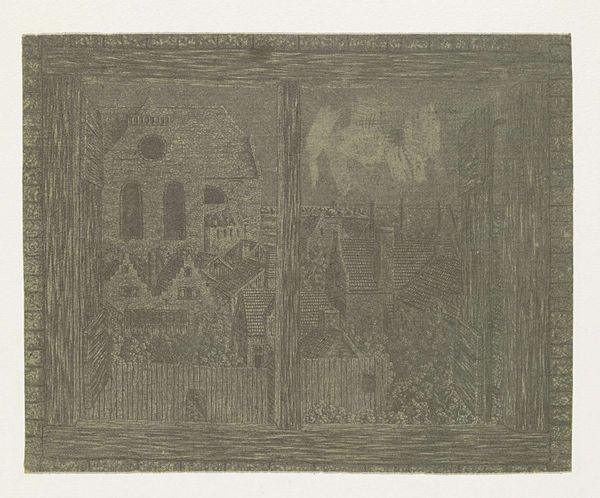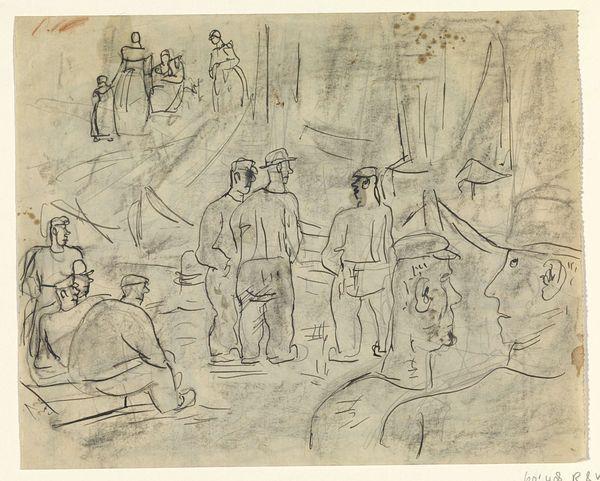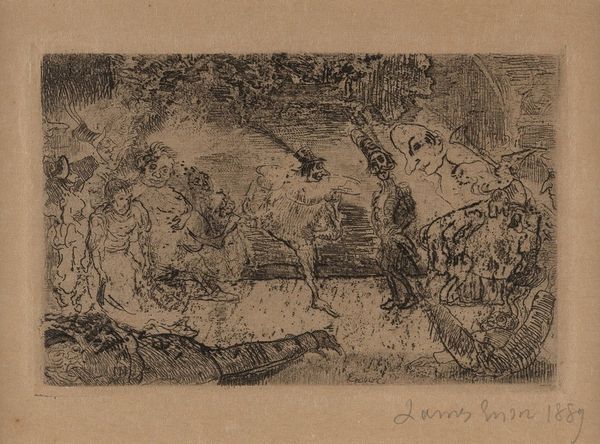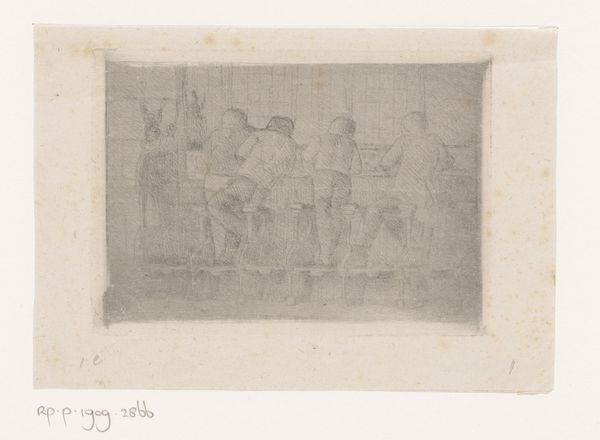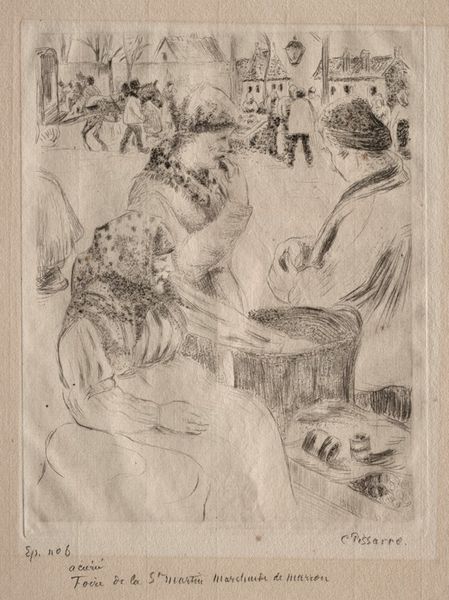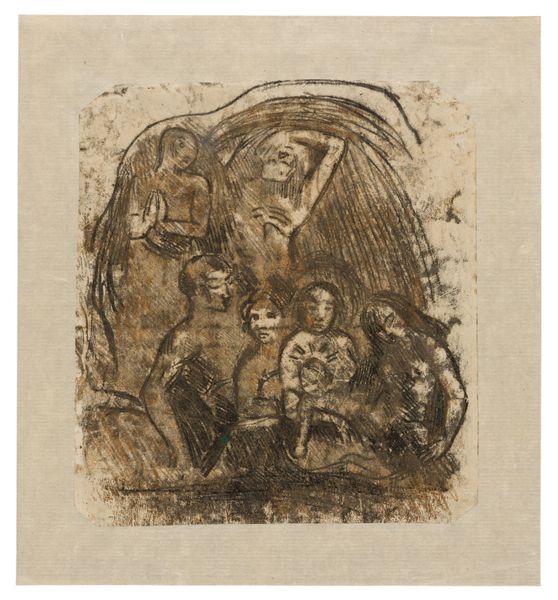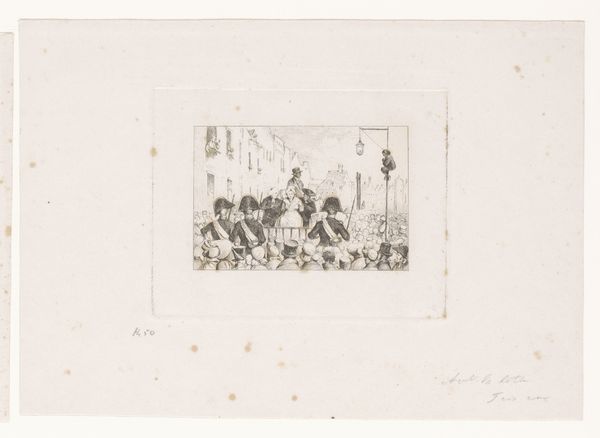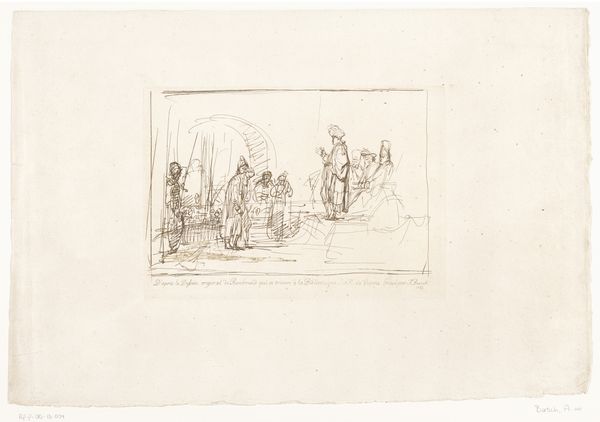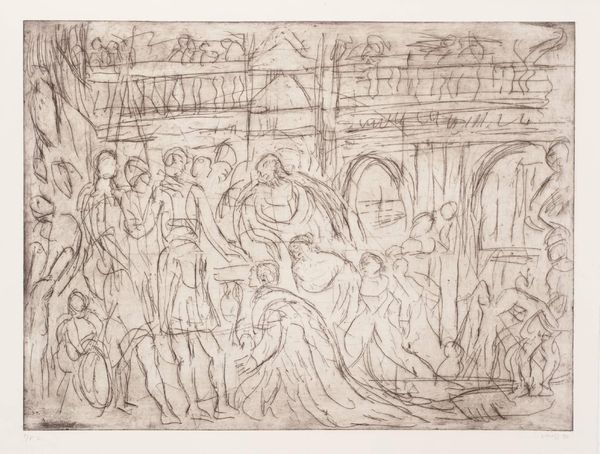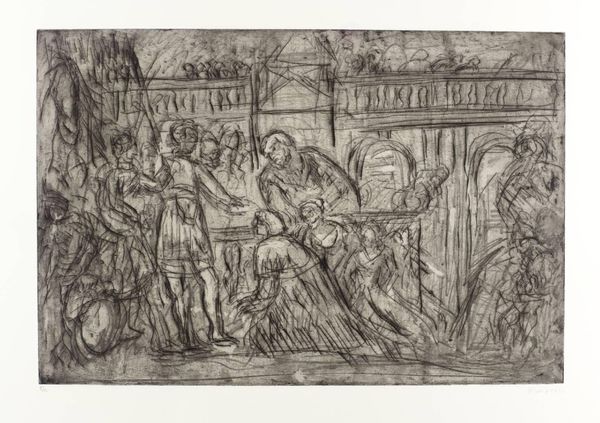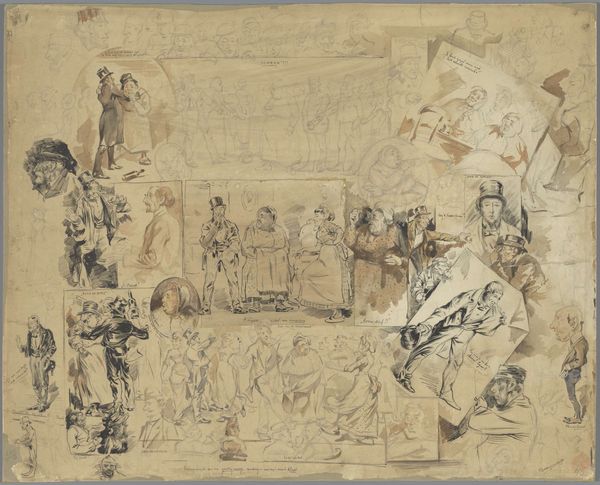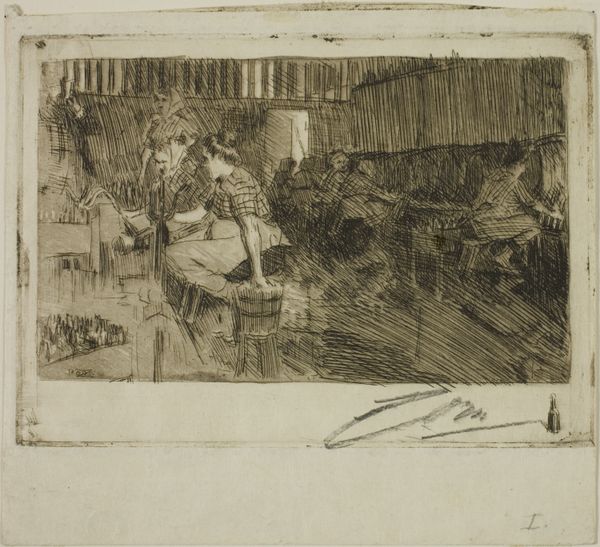
Copyright: Public Domain: Artvee
Curator: This is James Ensor’s 1888 etching and watercolor titled "The Gendarmes." What are your initial thoughts? Editor: There’s a strange sense of compression, a feeling of something teeming beneath the surface of this outwardly mundane scene. Is it just me, or are they also menacing? Curator: It's fascinating to see how Ensor utilizes the etching medium. Note the linear hatchings that constitute most of the figures. This attention to texture feels integral to understanding Ensor's social commentary; etching as a reproducible medium was a technique used by the popular press. The "high" subject of officers are treated through a "low" means of reproduction. Editor: Precisely! Look at the way the ink lingers, caught in the roughened paper fibers, the irregular depths creating this uncanny, feverish atmosphere. It goes beyond simple representation, and is deliberately unnerving, though the image could very well have just been executed rather crudely. The faces are particularly compelling; contorted, masked somehow by their profession. There’s a certain element of caricature, a dark edge. Curator: These formal qualities really emphasize Ensor’s broader interest in exposing social facades and systems. The Belgian government commissioned and utilized groups like "The Gendarmes" to violently put down labor uprisings and movements; in fact, this piece was executed right at the boiling point of popular Belgian resentment to the political climate of the late 19th century. The almost frantic energy conveyed through the rapid etching gives it this simmering tension that feels entirely historically situated. Editor: So, form really does follow function in a literal, historical way, adding even further to the intensity, this image functions as more than a mere depiction of authority figures; it becomes a concentrated expression of unrest. It speaks volumes about the turbulent undercurrents present in Ensor’s world, both socially and psychologically. Curator: Indeed. I think what ultimately captures me, then, is the image’s status as not only art but cultural artifact, indicative of not only James Ensor's internal world but fin-de-siècle Belgium writ large. Editor: Ultimately, seeing how this medium so uniquely shaped the atmosphere makes Ensor's exploration that much more unforgettable.
Comments
No comments
Be the first to comment and join the conversation on the ultimate creative platform.

